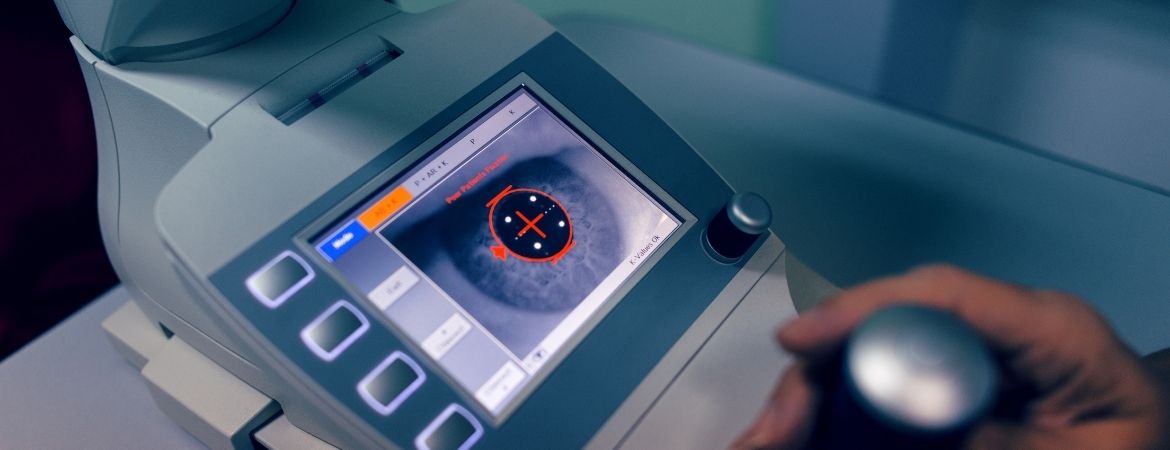
Positioned at the very front of the eye, the cornea is absolutely vital in enabling our sense of sight. This clear, curved layer acts as the eye’s main lens for bending light and providing protection from external factors. Various conditions can compromise the cornea’s transparency, whether through genetic or microbial origins. Should a patient experience significantly impaired vision unresponsive to other treatments, the doctor may suggest corneal transplantation. Also referred to as eye transplantation, this surgery involves replacing the damaged or diseased cornea, focusing on the outermost transparent tissue rather than the entire eye. The success of corneal transplantation relies on a specialized and skilled surgeon operating in a fully equipped eye hospital. Beyond restoring vision, this procedure enhances the cornea’s appearance and minimizes discomfort.
Table of Contents
ToggleWhat is a Laser Corneal Transplant?
The medical procedure of corneal transplantation involves the replacement of the eye’s foremost transparent layer, the cornea, with healthy corneal tissue donated by another individual. The cornea shapes the clear and curved surface at the eye’s forefront, directing incoming light onto the retina. If corneal damage results in issues like eye discomfort and compromised, unclear vision, then the requirement for corneal transplantation emerges.
During a corneal transplantation, the surgeon extracts the impaired cornea and substitutes it with viable corneal tissue. Laser technology is used to make incisions during this operation. The laser allows the surgeon to focus laser energy to a specific depth and quickly cut the tissue at that depth without causing any additional injury to the surrounding tissue. The incision, precisely shaped by the laser procedure, heals faster, and allows stitches to be removed faster. Corneal transplantation restores vision and improves quality of life in most people.
Reasons for a Laser Corneal Transplant

The key aim of a laser-facilitated corneal transplant is to elevate an individual’s visual clarity, thereby ameliorating their overall life quality. In the pursuit of this objective, the surgeon replaces damaged, ailing, or degenerated corneal tissue, stemming from injury or illness, with wholesome corneal tissue generously provided by a donor. Given the intricate nature of this surgical procedure and the necessity to safeguard the neighboring tissues, laser technology is utilized to create precise incisions. Additionally, doctors may recommend laser corneal transplants to enhance the cosmetic appearance of corneal injuries.
Advantages of Using a Laser in Transplant Surgery
In earlier methods employed for corneal transplantation procedures, the incisions were considerably less robust. As a consequence, it necessitated the retention of sutures for a duration of up to one year following the surgical intervention. Astigmatism often occurs after surgery and the patient had to use contact lenses to correct vision.
Laser corneal transplant uses a precision laser to remove only the damaged or degenerated corneal tissue, thus preserving the patient’s endothelial cells. Using a laser in a corneal transplant operation allows stitches to be removed much earlier and the risk of the body rejecting the new cornea can be reduced.
How is a Laser Corneal Transplant Performed?
Corneal transplantation surgery is usually performed under local anesthesia. General anesthesia can also be used in children or in patients where local anesthesia is not suitable according to the surgeon’s decision. While corneal transplant surgeries typically involve incisions made with a blade, the incorporation of femtosecond laser technology expedites the process and ensures accuracy.
Depending on the transplant type, either the entire cornea or a portion of it is excised. The transplantation of the requisite tissue is accomplished and meticulously sutured using microsurgical techniques. In this application, femtosecond laser is used to create incisions in both donor and recipient tissues. Thanks to this method, the surgeon can prepare the donor and recipient tissue to be exactly the same with laser precision, and the donor cornea fits perfectly to the recipient’s eye.
Recovery
The improvement in vision following a corneal transplant is linked to the state of the eye prior to the transplantation. The typical duration to observe outcomes in laser corneal transplants spans from 6 to 7 months. In non-laser techniques, this period can be up to 18 months. Corneal transplant procedures performed using laser provide higher precision, a lower risk of surgically induced astigmatism and an overall faster visual recovery.
Feeling a sensation of stinging in the eye for a few weeks post-surgery is commonly accepted. Ensuring eye protection from any impact is crucial during the recovery phase. It may take up to one year for vision to reach its best level.
How Soon does Your Vision Become Functional?
The enhancement of vision depends on the surgical method applied during the procedure and the patient’s condition prior to surgery. Subsequent to a laser corneal transplant procedure, the majority of patients can experience moderate visual clarity without relying on contact lenses or eyeglasses within a 2 to 3-week span. Around six to seven months following the surgery, once certain or all sutures have been removed, a notable improvement in vision is achievable with the assistance of eyeglasses or contact lenses.
In cases of non-laser surgical methods, the recuperation period is considerably lengthier. Waiting for a period of 12 to 18 months may be requisite to attain a result akin to that achieved through laser surgery. Furthermore, in numerous instances, laser vision correction can be conducted to rectify astigmatism or myopia that might arise after a corneal transplant surgery.



